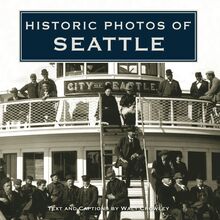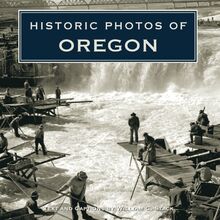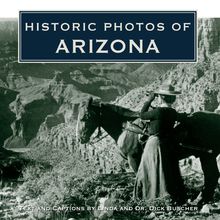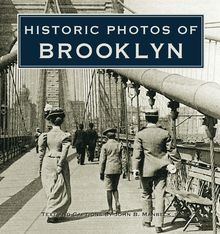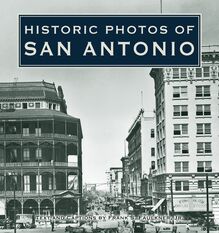Historic Photos of Gettysburg , livre ebook
166
pages
English
Ebooks
2007
Vous pourrez modifier la taille du texte de cet ouvrage
Obtenez un accès à la bibliothèque pour le consulter en ligne En savoir plus
Découvre YouScribe et accède à tout notre catalogue !
Découvre YouScribe et accède à tout notre catalogue !
166
pages
English
Ebooks
2007
Vous pourrez modifier la taille du texte de cet ouvrage
Obtenez un accès à la bibliothèque pour le consulter en ligne En savoir plus
Publié par
Date de parution
01 mai 2007
Nombre de lectures
1
EAN13
9781618586339
Langue
English
Poids de l'ouvrage
13 Mo
The Battle of Gettysburg was the bloodiest battle of the American Civil War and considered by many historians to be the war’s turning point. During three days in July 1863, the armies of the South under General Robert E. Lee and the armies of the North commanded by General George G. Meade clashed in the hills and dales surrounding the Pennsylvania town of Gettysburg. When the battle ended on July 3, more than 46,000 soldiers had been killed, wounded, captured, or gone missing.
Historic Photos of Gettysburg recounts the events of this momentous battle. From the carnage at Devil’s Den and Pickett’s Charge to Lincoln’s Gettysburg Address and the 50th and 75th reunions of the veterans from both sides, this look at the scene of the conflict, its aftermath, and its commemoration brings together in one volume a comprehensive visual record of this pivotal event.
Included in these pages are hundreds of historic photographs, made by Civil War photographer Mathew Brady and many others, all published in striking black and white. As a collection, these images preserve the historic events at Gettysburg, which helped shape the future of a nation, and document a reunified nation mending its soul.
Publié par
Date de parution
01 mai 2007
EAN13
9781618586339
Langue
English
Poids de l'ouvrage
13 Mo
HISTORIC PHOTOS OF
GETTYSBURG
T EXT AND C APTIONS BY J OHN S. S ALMON
HISTORIC PHOTOS OF
GETTYSBURG
Turner Publishing Company
200 4th Avenue North Suite 950
Nashville, Tennessee 37219
(615) 255-2665
www.turnerpublishing.com
Historic Photos of Gettysburg
Copyright 2007 Turner Publishing Company
All rights reserved.
This book or any part thereof may not be reproduced or transmitted in any form or by any means, electronic or mechanical, including photocopying, recording, or by any information storage and retrieval system, without permission in writing from the publisher.
Library of Congress Control Number: 2006937078
ISBN-10: 1-59652-323-9
ISBN-13: 978-1-59652-323-4
Printed in the United States of America
09 10 11 12 13 14-0 9 8 7 6 5 4 3
C ONTENTS
A CKNOWLEDGMENTS
P REFACE
T HE B ATTLE (1863)
D EDICATION AND R EMEMBRANCE (1863-1900)
F IFTIETH R EUNION (1913)
S EVENTY-FIFTH R EUNION (1938)
N OTES ON THE P HOTOGRAPHS
B IBLIOGRAPHY
The North Carolina State Monument was dedicated on July 3, 1929. The sculptor, Gutzon Borglum, is most famous for his carving of the heads of presidents George Washington, Thomas Jefferson, Abraham Lincoln, and Theodore Roosevelt on Mount Rushmore in South Dakota. He was also the first sculptor to work on the massive monument to Confederate heroes at Stone Mountain, Georgia, although his work was obliterated after he had a falling out with the directors of the project and left the state. Augustus Lukeman finished the project.
A CKNOWLEDGMENTS
This volume, Historic Photos of Gettysburg , is the result of the cooperation and efforts of many individuals, organizations, and corporations. It is with great thanks that we acknowledge the valuable contribution of the following for their generous support:
Gettysburg National Military Park Library
The Library of Congress
National Archives
Pennsylvania State Archives
U.S. Army Military Institute
We would also like to thank Emily J. and John S. Salmon for valuable contributions and assistance in making this work possible.
P REFACE
After stunning victories in Virginia early in May 1863 at Chancellorsville and Fredericksburg, Confederate general Robert E. Lee carried the war north, across the Mason-Dixon Line. His infantry marched through the Shenandoah Valley and central Maryland as Major General J. E. B. Stuart s cavalry harassed Union supply lines to the east. Union major general George G. Meade, who had replaced Major General Joseph Hooker as commander of the Army of the Potomac on June 28, led his force through Maryland and into Pennsylvania in pursuit. The Federals collided with Lee s Army of Northern Virginia at Gettysburg, Pennsylvania, on July 1, starting a battle neither side had intended to fight there. Three bloody days later, the defeated Confederates began retreating through Maryland to the Potomac River, where they crossed into Virginia on July 14.
This was Lee s second invasion of the North, the first having occurred in September 1862, which culminated in the Battle of Antietam on September 17. On that, the bloodiest single day in American history, about 23,000 men on both sides were killed, wounded, or reported missing. Mathew Brady, a noted New York and Washington portrait photographer, and his staff of outstanding cameramen were there to record the gruesome aftermath. For the first time, noncombatants far removed from the action saw what war really looked like when Brady later mounted an exhibition of his photographs. For generations reared on heroic, bloodless paintings and engravings, the images of mangled, bloated corpses were a shock. As a reporter for the New York Times wrote, Mr. Brady has done something to bring to us the terrible reality and earnestness of the war. If he has not brought bodies and laid them in our door-yards and along [our] streets, he has done something very like it.
The historic photographs of Gettysburg, taken by Brady s men and others, make the reporter s words ring even more true, even to modern Americans who have grown to adulthood with images of war on the nightly news. That Civil War photographers accomplished so much with the massive equipment of the day, with wet glass plates developed in stifling darkroom wagons, makes those pioneer photojournalists seem almost superhuman. The images they created, which are preserved in the Library of Congress and elsewhere, constitute one of our nation s greatest historical treasures.
Turner Publishing Company is honored to issue this book, which contains some of the most important pictures taken just after the Battle of Gettysburg and during the years that followed. They depict not only the immediate effects of the battle, but also the ceremonies surrounding the Gettysburg Address, a statement of national purpose some historians consider the equal of the Declaration of Independence. They also show the veterans reunions of 1913 and 1938, which have come to symbolize the reunification of the United States and the reconciliation of the soldiers who fought so bravely and so well on those July days in 1863. We salute their courage and steadfastness, and we encourage you to visit Gettysburg National Military Park to tread the ground they trod.
Todd Bottorff, Publisher
Mathew Brady took this view of Gettysburg from Seminary Ridge, northwest of the town, about July 15, 1863. Gettysburg was not the sleepy village of legend, but a bustling town and county seat located at the intersection of several main roads and turnpikes. It was the commercial hub of Adams County, and indeed of the surrounding region. On the afternoon of July 1, as Union and Confederate generals fed additional troops into the growing battle, Federal forces made a brief stand here before the Confederates swept them eastward to Cemetery Ridge.
T HE B ATTLE
(1863)
When Confederate general Robert E. Lee launched his second invasion of the North late in June 1863, he had several goals in mind. He intended to let his army live off the ripening farmlands of Maryland and Pennsylvania, threaten Northern cities to draw Union forces away from the South, encourage the Northern peace movement, and gain foreign recognition for the Confederacy. To accomplish the last goal-foreign recognition and perhaps even intervention-Lee wished to defeat a Federal army on its home soil.
Lee marched east through Pennsylvania, while Union major general George G. Meade, a native Pennsylvanian, led the Army of the Potomac northwest from Washington, D.C., to find the Confederates. Neither general knew where the other s army was located; each dispatched his cavalry to find out. Lee s infantry at first was far to the west of the Union cavalry, and Lee s cavalry, commanded by Major General J. E. B. Stuart, was far to the east of the Confederate commander and out of contact with him. Then, on July 1, a Confederate infantry brigade approached Gettysburg from the northwest, having heard that much-needed shoes could be obtained there. Just outside of town, it encountered two Union cavalry brigades. Soon Federal infantry arrived, and the unexpected and unplanned battle was joined. Under Confederate counterattacks, the Union infantry fell back, first to Seminary Ridge and then to Cemetery Ridge.
By the morning of July 2, the armies confronted each other across farm fields between the parallel ridges. The Union line, which faced west, stretched from Culp s Hill on the north, south along Cemetery Ridge, to Big Round Top and Little Round Top on the Federal left. The Confederates occupied Seminary Ridge, facing east. Between the opposing armies lay wheat fields, orchards, and the Emmitsburg Road. Lee launched unsuccessful attacks on the Union left flank at the southern end of Cemetery Ridge, and the carnage was great at Little Round Top and Devil s Den, and in the orchards and wheat fields. The day ended with another attack that failed, against Culp s Hill on the Federal right flank.
On the afternoon of July 3, after a ferocious artillery barrage that generally overshot its target, Lee launched an all-out assault on the center of Meade s line on Cemetery Hill. Famously if erroneously known as Pickett s Charge (Major General George E. Pickett was but one of three division commanders leading the assault), this attack under the overall command of Major General James Longstreet foundered under Federal shot, shell, and small-arms fire. Lee began his retreat the next day, crossing the Potomac River into Virginia on July 14. His invasion had failed, at a cost of about 50,000 killed, wounded, and missing for the two sides.
Newspaper reporters described the action breathlessly, proclaiming that Gettysburg and Pickett s Charge constituted the high-water mark of the Confederacy. Historians continue to debate the battle s significance: whether Gettysburg or Antietam might better deserve to be called the war s turning point. Because of all that took place at Gettysburg, however-the carnage, the courage, the Charge, and the Address-there is no doubt that this is the ground most consecrated in American hearts.
This house, which was constructed about 1779 and belonged at the time of the battle to Mrs. Mary Thompson, served as Lee s headquarters because of its ideal location on the Chambersburg Turnpike at the crest of Seminary Ridge. Mrs. Thompson is standing beside her fence, on the right. Lee, as was his custom, slept in his tent, which was pitched at about the photographer s position. He and his staff used the Thompson house for meetings and meals. Brady took this picture on July 15.
Meade used this dwelling, the home of Mrs. Lydia A. Leister, as his headquarters after he arrived on the battlefield on July 2. This view, taken on July 6 before the Union army left Gettysburg, shows some of the damage-including dead horses-wrought by the Confederate artillery barrage just before the attack known as Pickett s Charge (actually the Pickett-Pettigrew-Trimble Charge) on July 3. Although the hous



